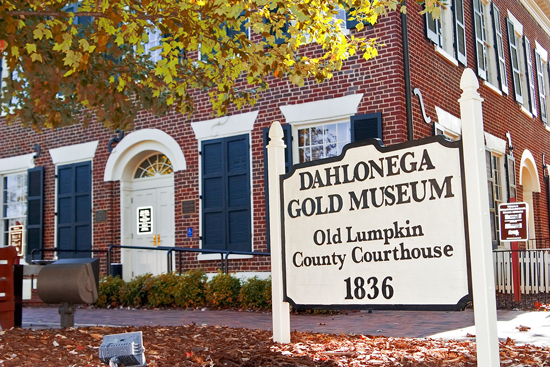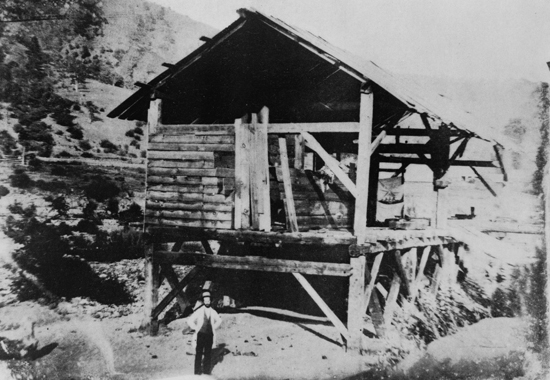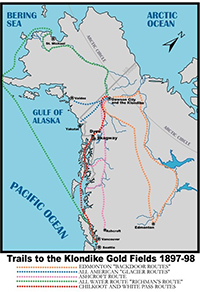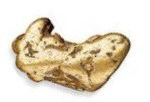|

Gold Pans and
Placer Gold*
Max Fianery /
California Geological Survey /
USGS
The
Gold Rush in North America
|
|
What Is Placer Gold?
The NPS tells us:
"Unlike hard
rock
mining, which extracts veins of precious
minerals from solid rock, placer mining is the
practice of separating heavily eroded minerals
like gold from sand or gravel."
For more
 go here.
go here. |
1828
In 1828, gold was discovered in
northern Georgia. This developed into the first gold rush in
the U.S.
In 1833, the site became the city of Dahlonega.
See also
 Indian Removal Act
of 1830.
Indian Removal Act
of 1830.
Today, you can visit the
 Dahlonega Gold Museum.
Dahlonega Gold Museum.

1848
The next major gold rush begun
when in 1848 John Sutter's carpenter
James W. Marshall
discovered gold on the South Fork of the American River,
which was located on Sutter's land in California, approx.
one hour northeast by car from what would become Sacramento
in 1850.
Here is James Marshall standing
in front of Sutter's sawmill at Coloma, California, the site
of his gold discovery.

James Marshall in Front of
Sutter's Sawmill
Photomechanical reproduction of the 1850(?) daguerreotype
by R. H. Vance
Library of Congress
According to California State
Parks,
This event led to the greatest mass movement
of people in the Western Hemisphere and was
the spark that ignited the spectacular
growth of the West during the ensuing
decades.
More
 here.
here.
1850
Gold was discovered in Colorado.
Today, you can tour the Mollie Kathleen Gold Mine at Cripple Creek.
1858
Gold was found along the Fraser
River, and in 1860 in the Cariboo Mountains in British
Columbia.
1859
The
Silver Rush for the Comstock Lode begun near Virginia City in Nevada.
1874
The Black Hills gold rush of South Dakota
begun.
1896
The Klondike gold rush along the Klondike and the Yukon
River begun.
Go here for a
 map of the Klondike Gold Rush
on the Alaska Purchase page.
map of the Klondike Gold Rush
on the Alaska Purchase page.

Map of the Trails to the Klondike Gold Fields
1897-98
So far the major gold rushes of North America.
See also
 American Timeline
American Timeline

Gold Nugget
NPS
More History
|